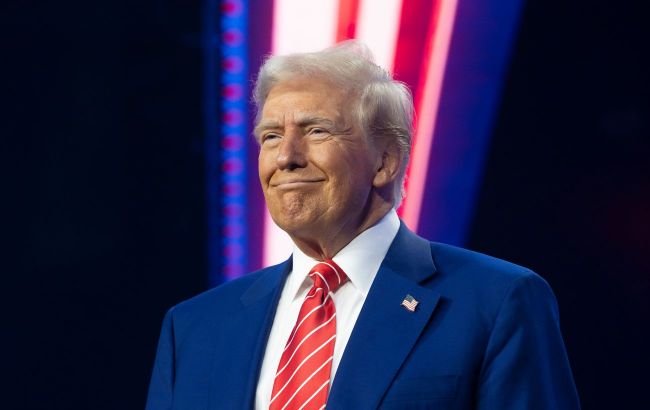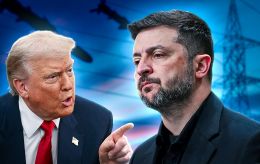Dollar in Trump's hands: Future of world currency and when to expect peak rate
 US President Donald Trump's policy will directly impact the dollar rate (photo: Getty Images)
US President Donald Trump's policy will directly impact the dollar rate (photo: Getty Images)
The US dollar continues to remain the world's primary currency, accounting for a significant share of global reserves and trade transactions. With Donald Trump coming to power, the strength of the dollar may experience either reinforcement or weakening, depending on political and economic factors.
These factors are discussed in the material by RBC-Ukraine.
Contents
- How Trump’s initiatives affect the dollar and the US economy
- Impact of the Federal Reserve's policy on the dollar exchange rate
- Dollar peak and potential decline
How Trump’s initiatives affect the dollar and the US economy
In his campaign speeches, the future 47th president of the United States, Donald Trump, often stated that he would prefer to see a weaker dollar, recalls Oleksandr Martynenko, Head of Corporate Analysis at ICU Group. According to Trump’s plan, this would help boost the competitiveness of American exports and reduce the US trade deficit.
"At the same time, the reality is that due to the strong position of the US economy relative to other leading global economies, the attractiveness of American capital markets, and the country's leadership in the high-tech sector, the dollar remains strong. Moreover, all of Trump’s initiatives to raise import tariffs on goods from the US's key trading partners heighten concerns about their economic prospects and, for now, only contribute to the further strengthening of the dollar," Martynenko told RBC-Ukraine.
Financial analyst Andrii Shevchyshyn also believes that the US dollar will maintain a strong position compared to other global currencies, at least in the near term. According to the expert, the dollar index could return to the historical highs of 40 years ago relative to a basket of six currencies of the US’s major trading partners: the euro, Japanese yen, British pound sterling, Canadian dollar, Swedish krona, and Swiss franc.
"Over the past 20 years, the dollar index has fluctuated between 100 and 106 points. However, since November 2024, the index has broken out of this range, reaching 109 points against the basket of currencies even before the inauguration. This breakthrough after a prolonged period in a stable corridor indicates potential for further growth. It is likely linked to Trump's protectionist policies, which include strengthening the US position, the need for importing technological equipment, rebuilding factories, and stimulating industrial development," says Shevchyshyn.
According to him, once the situation stabilizes and there is a sufficient resource and industrial base, the US authorities will begin to gradually weaken the dollar. Andrii Shevchyshyn predicts that this will not happen before the end of 2025.
Impact of the Federal Reserve's policy on the dollar exchange rate
Another indication that the United States is currently interested in maintaining a strong dollar is the Federal Reserve's decision to keep the interest rate at 4.25-4.50%. This rate is higher than that of Europe, motivating investors to put their money into US assets, as they offer higher returns compared to investments in other developed countries.
"While central banks in Europe and the United Kingdom are considering lowering rates to support economies that are stagnating or slowing down, the Federal Reserve is keeping its rate high. At this point, it's hard to say whether it will lower the rate in upcoming meetings. Considering Trump's policies and trade wars, inflation in the US could remain high, making it unreasonable to reduce the rate," explains the financial analyst.
He adds that over time, the Fed's interest rate mechanism could be used to lower the dollar's value. The American establishment might pursue this to boost the competitiveness of US exports. This could be achieved, in particular, through the devaluation of the national currency to a certain level. According to Shevchyshyn, Trump's team will find it easier to implement such a policy after the resignation of the current Federal Reserve Chair, Jerome Powell.
Dollar peak and potential decline
The dollar is nearing its peak and will soon begin to lose significant "weight," says Artem Shcherbyna, Investment Director at Capital Times. He points out that recent statements from Trump and his administration indicate they will continuously seek solutions to reduce the United States budget deficit.
"The US can continue to influence the dollar's exchange rate through currency interventions. Donald Trump, who previously supported the development of the domestic market, is against a strong dollar and high interest rates. Currently, dollar rates are quite high compared to the euro, Japanese yen, and British pound, which creates some pressure on the US economy. However, due to shifts in economic policy, this may change as early as the beginning of Trump's presidential term. It is expected that the dollar will reach its peak this year and then begin to decline," Shcherbyna told RBC-Ukraine.
Shcherbyna believes that Trump's trade war — which includes a 10% tariff on Chinese goods and a one-month delay on 25% tariffs for imports from Canada and Mexico — could strengthen the dollar against the currencies of these countries. However, according to him, other global currencies are reacting much less to these measures, strengthening mainly against the Canadian dollar and Mexican peso.
"If this policy extends to the euro, the dollar may face risks in the short term. However, the primary goal of monetary policy remains to avoid an excessively strong dollar, which will allow consumers to buy goods and businesses to operate in foreign markets," he explains.
The expert also predicts that the currency market will remain unstable for several years, with the dollar fluctuating between rises and falls. The US has sufficient reserves to influence the exchange rate, but due to rising interest rates and restrictions on money issuance, it has become more challenging to apply these mechanisms. New ways to stabilize the situation are currently being actively explored.
"One of the options proposed by Trump is a significant tax reduction to stimulate the economy and cover the deficit through economic growth. However, without lowering the cost of credit, this strategy may prove ineffective," Shcherbyna notes.
He does not rule out that to reduce the debt burden on the US economy, the country may start utilizing its significant gold reserves, whose value is currently at record highs. It is also possible that the US will offer other countries the opportunity to purchase bonds denominated in gold to avoid a collapse in the metal market due to the sale of large volumes.
Artem Shcherbyna also points out that aggressive policy may become a defining characteristic of the US in the coming years, complicating the prediction of specific actions, including those related to the dollar.
Sources: exclusive comments from Oleksandr Martynenko, Head of the Corporate Analysis Department at ICU Group, financial analyst Andrii Shevchyshyn, and Artem Shcherbyna, Investment Director at Capital Times.

